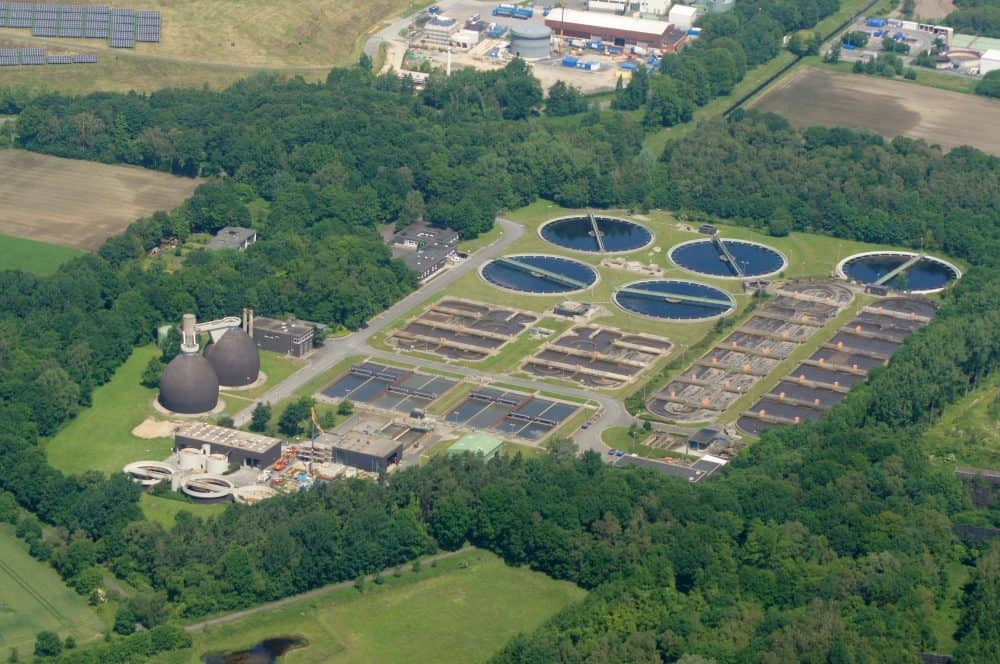A recent paper from Yale University has raised hopes that monitoring of sewage could provide a key early warning indicator of a community outbreak of the coronavirus.
Researchers compared the amount of virus RNA found per mL in primary sludge collected from a wastewater treatment facility in New Haven, Connecticut in the United States, with the number of positive new cases in the community from mid-March until the end of April.
The chart below shows the amount of virus RNA found per mL of primary sludge (the red line) with the number of new cases of COVID-19 (the black line). The amount of virus collected from the sewage samples almost perfectly correlates with the number of new cases several days later.

Having good quality, timely data warning of an outbreak of COVID-19 could be an invaluable new weapon in the fight against the coronavirus. It could allow for all households connected to a particular sewage treatment works to be tested for the virus, and/or a localised stay at home order that would impact upon a comparatively small region.
There are 7,078 sewage treatment plants in England and Wales, 10,814 sewage treatment works and community septic tanks in Scotland and Northern Ireland, and 1,100 treatment plants in the Republic of Ireland.
Whilst the number of households connected to sewage treatment plants will obviously vary significantly, on average in England and Wales there are 8,400 people per sewage treatment plant, 4,500 people per plant in the Republic of Ireland, and 680 people per treatment plant or community septic tank in Northern Ireland and Scotland.
Given the small numbers of people per plant, a local stay at home order followed by universal testing in the affected area would be possible given current testing capacity; 98% of UK households are connected to the country’s sewerage service.
The equipment used by the Yale researchers, the Qiagen RNeasy PowerSoil Total RNA kit, currently has a list price of £269. Whilst obviously there are many other costs to consider, a back of the envelope estimate suggests it would cost £4.8m to purchase testing kits for the UK’s sewage treatment plants and €330,000 to cover the Republic of Ireland, extremely small sums given the current incalculable loss to life and the economy.
The Yale paper has yet to be peer reviewed, but the signs are extremely encouraging that there may be a way to systematically collect early warning data of a community outbreak of the coronavirus.
Sewage monitoring is already being discussed by the British government as part of its plans to track the prevalence of the virus. However, given recent research, the British and Irish governments, and the devolved administrations, should bring forward plans to introduce sewage monitoring to their plans to test, trace and isolate. Ideally, tomorrow.
Update 28th May 2020:
As pointed out by Brendan Halpin of the University of Limerick, Neil O’Leary, and this excellent Twitter thread by Nick Brown, the relationship between virus RNA in wastewater and COVID-19 is not as neat as what is suggested in the pre-print.
The paper makes two statistical errors; it reports a correlation between time-series and does so on smoothed data. Brendan Halpin wrote on his blog:
It turns out that the correlation between the RNA measurement and hospital admissions is 0.357 (R2 = 0.13). If we lag by one day, the R2 rises to a very respectable 0.45, but declines again if we lag by 2 (0.22) or 3 (0.22) days. In other words, there is a real signal here, but it is vastly overstated by R2 = 0.99, and the lead it gives is not as big as claimed.
The authors of the pre-print are looking into this issue and are working on an update.
Despite the lead not being as large as claimed, it appears that there is a useful signal in the data. Given the relative ease and low cost of collecting this data, monitoring of wastewater treatment plants and publication of data is still something that should be urgently considered to assist with efforts to contain future outbreaks of the virus.
“20140601 122351 Kläranlage Coerde, Münster (DSC02141).jpg” by Günter Seggebäing is licenced under CC BY-SA 3.0
Chart taken from: Jordan Peccia et al. (2020) “SARS-CoV-2 RNA concentrations in primary municipal sewage sludge as a leading indicator of COVID-19 outbreak dynamics” and is licenced under CC BY-NC-ND 4.0
A qualified accountant and data analyst, interested in politics, economics and data. Twitter: @peterdonaghy
Discover more from Slugger O'Toole
Subscribe to get the latest posts to your email.
